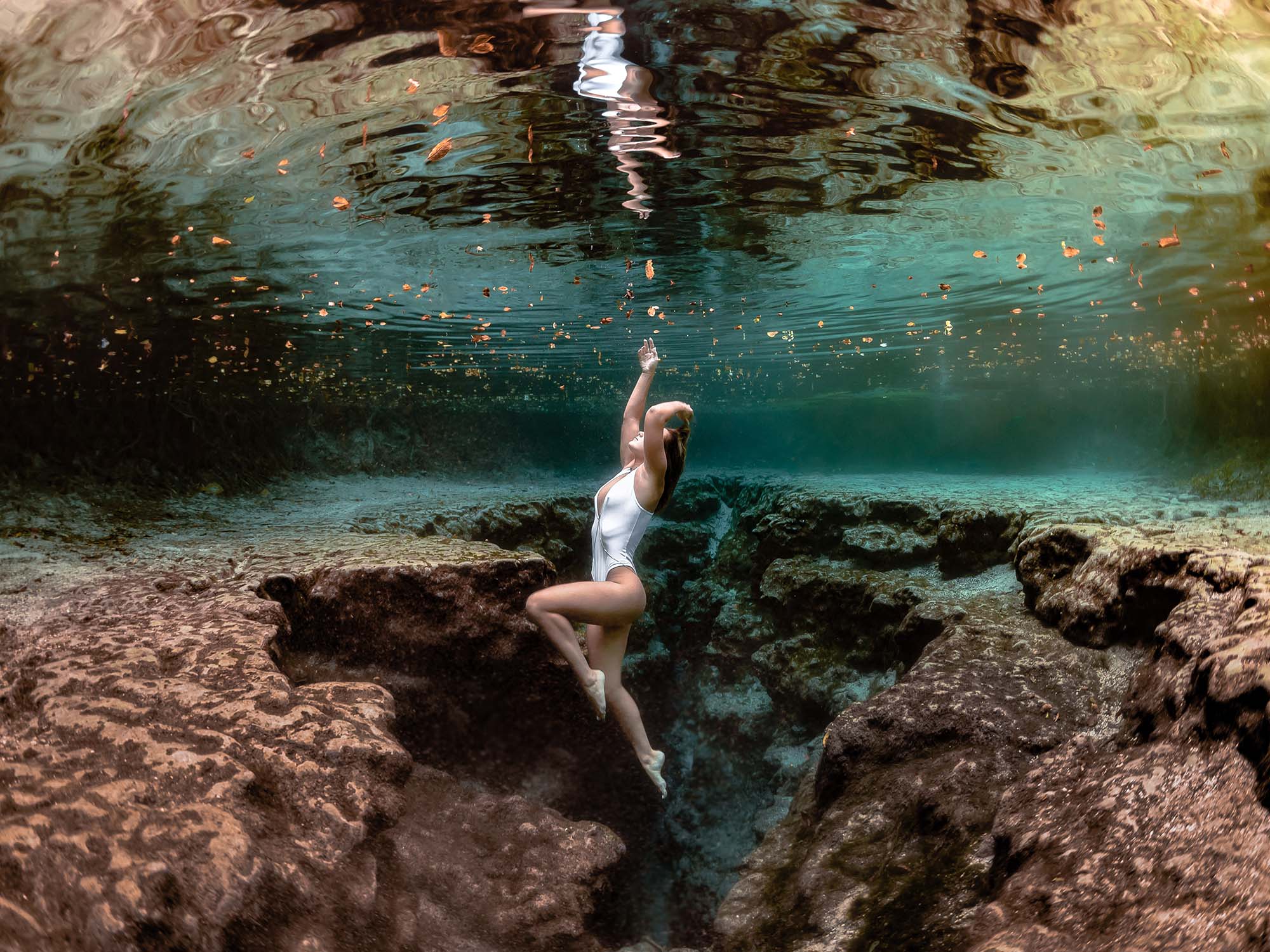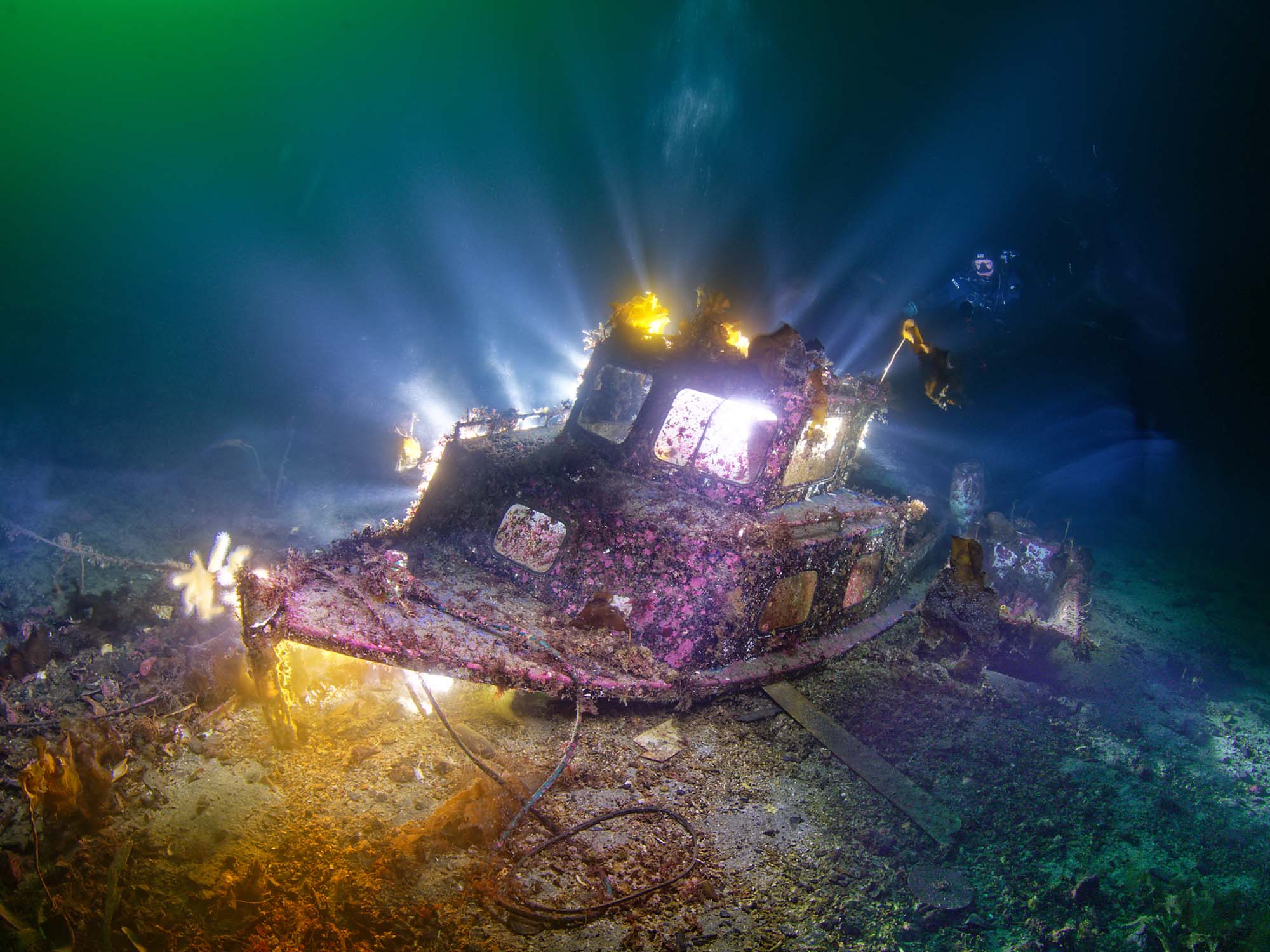By Steve Miller
As a photographer - underwater or topside - there are three values that you need to concern yourself with to properly expose an image: Aperture, ISO, and Shutter Speed. Today we’re going to talk about aperture. Aperture is the most complex of the three, and perhaps the most important to understand. I change aperture underwater more frequently than anything else, so let’s dive into why that is. Follow along with the video below, or scroll down to read the full article.
Aperture Value and F-Stop
Think of aperture like a pin hole. The larger it gets, the more light goes through. That’s the easy part.
The aperture value is called the f-number and each change in value is called an f-stop. The f-number scale is exactly opposite the way you would expect it to run. A larger f-number means a smaller aperture. So an aperture of f/22 is considerably smaller than the size of an aperture f/4.
Each change in f-stop - for example from f/5.6 to f/8 - reduces the light by half. So f/22 is one f-stop away from f/16 and therefor it captures half the amount light.
Photographers often can be heard to say ‘a stop is a stop is a stop.’ On a high quality camera, shutter speed, ISO, and aperture can each be changed independently to affect the brightness of a photo. Aperture is so commonly changed because it also affects the overall focus of the image. And of course, focus tends to be one of our primary concerns as photographers.

Larger aperture (smaller f-number) = more light, shallow depth of field.Smaller aperture (larger f-number) = less light, large depth of field.
Depth of Field
Aperture affects focus because it affects the camera’s depth of field. Depth of field refers to how much of the scene is in focus - not side to side, but front to back. The high level principle you need to know is that smaller apertures give us greater depth of fields.
On the surface photographers are often trying to shoot the largest - or widest open - aperture possible to create this soft bokeh effect. The iPhone ‘Portrait’ mode replicates this. The subject is in focus with the rest of the background blurred, and it makes the photo look more rich and professional.

Depth of field is important because it helps distinguish your subject from the background which creates a focal point to draw the eye to.
How Depth of Field Changes Underwater
F/1.2 and f/2 are very desirable apertures for portrait photography topside. But we never use them underwater.
Here’s why: A dome port underwater changes the way your subject looks to your camera. The subject looks much closer, and curved. To the camera, the sides of your frame will actually look closer than the center. So you need some extra depth of field to keep all of that in focus at the same time.
Smaller apertures between f/1.2 and f/5.6 generally will have problems with edge sharpness when shooting a dome port underwater. You want to shoot f/8 or higher when possible, and always focus on the closest subject that you want to be in focus.

Small apertures improve photo sharpness in two ways: by increasing depth of field and by reducing aberrations. Photos taken at smaller apertures will be sharper than photos taken at larger apertures.
F/8 and Be There
"F/8 and Be There" is one of my favorite underwater photography sayings. How do you get great underwater photos? F/8 and be there.
The water actually gives you a natural bokeh blur behind your subject, it’s really amazing how quickly objects lose color and clarity with distance underwater.
We want to shoot small apertures underwater and even smaller apertures for macro photography and close focus wide angle. When your whole frame is composed within a few inches of depth, you need a really high percentage of that to be in focus to make sense of a small subject. I typically shoot apertures between f/16 and f/22, or even smaller when shooting macro lenses.

Underwater the depth of field is much more forgiving moving away from your camera than it is coming closer.
Practice Your Settings
Next time you’re underwater, try bracketing aperture by taking a few shots of the same subject and changing the aperture by one stop in between photos. With some practice you’ll quickly pick up on the relationship between aperture, light, and focus.
So that’s the basics of aperture: shoot small apertures for better focus underwater. It really is that simple after all.
 Ambassador Steve Miller has been a passionate teacher of underwater photography since 1980. In addition to creating aspirational photos as an ambassador, he leads the Ikelite Photo School, conducts equipment testing, contributes content and photography, represents us at dive shows and events, provides one-on-one photo advice to customers, and participates in product research and development. Steve also works as a Guest Experience Manager for the Wakatobi Dive Resort in Indonesia. In his "free" time he busies himself tweaking his very own Backyard Underwater Photo Studio which he's built for testing equipment and techniques. Read more...
Ambassador Steve Miller has been a passionate teacher of underwater photography since 1980. In addition to creating aspirational photos as an ambassador, he leads the Ikelite Photo School, conducts equipment testing, contributes content and photography, represents us at dive shows and events, provides one-on-one photo advice to customers, and participates in product research and development. Steve also works as a Guest Experience Manager for the Wakatobi Dive Resort in Indonesia. In his "free" time he busies himself tweaking his very own Backyard Underwater Photo Studio which he's built for testing equipment and techniques. Read more...
Additional Reading
Super Macro Underwater Photography Techniques
Close Focus Wide Angle In Depth
The Importance of Hitting the Water with a Shot in Mind [VIDEO]
Why You Aren't Shooting Great Landscapes Underwater
The Greatest Classroom on Earth: Teaching Underwater Photography in South Africa











![Underwater Exposure Explained | Aperture Settings [VIDEO]](http://www.ikelite.com/cdn/shop/articles/aperture-underwater-cover.jpg?v=1684500115&width=1500)

